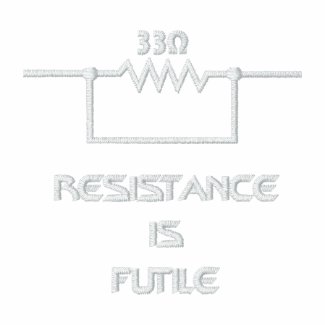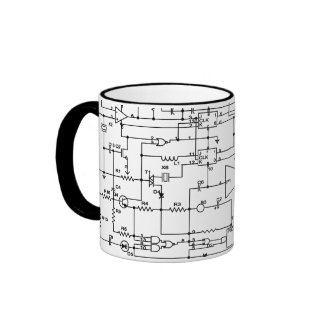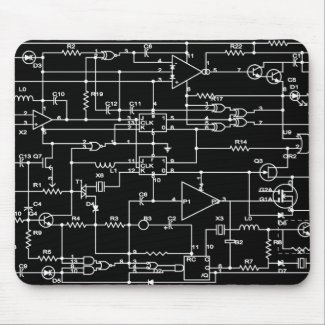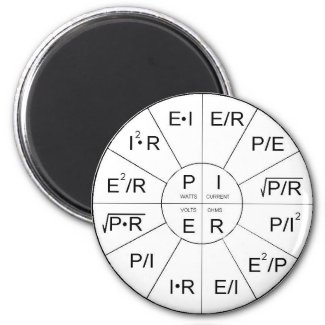Quick Guide to Resistors
Wednesday, November 16, 2011
Sunday, August 14, 2011
Quick Guide to Resistors
The unit of resistance(R) is called the ohm(Ω) and indicates the amount of resistance a piece of material offers to the flow of electrons.
The principle application of a resistor is to limit current and to divide voltage. In some cases, resistors are used to generate heat (i.e. toaster).
There are two main types of resistors:
• Fixed – Fixed resistors are available with a large selection of resistance values that are set during manufacturing and cannot be changed easily.

Figure 1: Resistor(R) Schematic Symbol
• Variable - Variable resistors are designed so that their resistance values can be changed easily with a manual or an automatic adjustment to divide voltage or to control current.
-There are three types of variable resistors:
Potientiometer - used to control voltage.
A 3-terminal device. Terminals 1 and 2 have a fixed total resistance between them. Terminal 3 is connected to a wiper (moving contact). The operator varies the resistance between 3 and 1 or between 3 and 2. (Figure A.)
Rheostat-used to control current. A 2-terminal variable resistor. (Figure B.)
Note: Figure C. shows how to connect a potentiometer as a rheostat by connecting terminal 3 to either terminal 1 or to terminal 2.
Parts B. and C. are equivalent symbols.

Figure 2: Variable Resistor Schematics

Figure 3: Example of Variable Resistor – The Resistance Values Change According to the Placement of the Wiper
Two basic shapes of Resistors:
• Cylindrical
• Rectangular

Figure 4: Two Basic Types of Resistors (Cylindrical / Rectangular)
Geometric Observations:
• Double the resistivity and R doubles
• Double the length and R doubles
• Double the area and R halves
An analogy is water flowing through a pipe. A larger cross-section offers less resistance to water flow.
Resistor Color Coding:
Resistors use a coded system of colored bands to indicate their value in Ohms. The resistor may have 4, 5, or 6 bands. The standard color coding method uses a different color to represent a number from 0 to 9:

This example is of a four-band fixed resistor with a silver tolerance band.


The first two resistor bands give the base value, the third band gives the multiplier, the fourth band shows the tolerance.
The silver indicates that the resistor has a 10% tolerance. To determine the ohms value of the resistor, start at the other end with the first color band (red=2). This first band represents the first digit of the resistor's value. The next band represents the second digit (in the 10s place) of the resistor's value. In our example, the second digit is black which equals 0. It is in the 10s place so it equals 10 (2 X 10=20). The third band represents the decimal multiplier (The number of zeroes to put after the first two digits). Our example shows an orange band which means we add three zeros (20 X 1000 = 20,000). The total resistance of this example is 20K Ohms.
On a 5 and 6 banded resistor, the first three bands are the significant digits. The next band represents the multiplier. The last band on a 6 band resistor is the temperature coefficient of a precision resistor, measured in PPM/C (Parts Per Million per degree Celsius). To convert from ppm to %, divide the number by 10,000; to convert from % to ppm, multiply by 10,000. Example: a TC of 100 ppm/º_ is the same as a TC of 0.01%/º_C.
*Note: If the multiplier band is gold, the previous digits are multiplied by 0.1. If the multiplier band is silver, the previous digits are multiplied by 0.01. Example: a 1 Ohm Resistor has the color bands Brown/Black/Gold (10 X 0.1 = 1)

Figure 7: Resistor Color Coding

Mnemonic Memory Aid
- Big Brown Rabbits Often Yield Great Big Vocal Groans When Gingerly Slapped
- Beloved Brethren Remember Our Yoke God Brings Victory God’s Way
- Bad Booze Rots Our Young Guts But Vodka Goes Well
- Bad Boys Rape Our Young Girls Behind Victory Garden Walls
- Bachelor Boys Rush Our Young Girls But Veronica Goes Wild for Silver and Gold (this one also includes the standard tolerance codes of Silver and Gold)
- Bad Boys Rape Our Young Girls But Violet Gives Willingly – Get Some Now (this one also includes the standard tolerance codes of Gold [Get], Silver [Some], and None [Now])
Mnemonic Memory Aid
Preferred Values of Resistors-
General-purpose, fixed resistors are available in what is known as industry-standard "preferred values" of resistors. There are several series: E3, E6, E12, E24, E48, and E96 series. The E12 series has 12 values in each decade and are 10% tolerance values, and is probably the most common.
The E24, E48, and E96 have 24, 48, and 96 values in each decade and are typically 5%, 2%, and 1% tolerance respectively. The E3 and E6 series have 3 and 6 values in a decade. They are not common for small (0.25 and 0.125 Watt) resistors. The values in a decade for each series are listed in the table below.

Figure 9: Color Code Reference Chart
For fun irresistible electrical (electronics) engineering gifts – click on the images below:
☺☺☺☺☺☺☺☺☺☺☺☺☺☺☺☺☺☺☺☺

Capacitor | Resistor Color Cartoon iPad cases by rosandich_gifts
Join one of the biggest iphone affiliate programs
Jokes
Two atoms were walking across a road when one of them said, "I think I lost an electron!" "Really!" the other replied, "Are you sure?" "Yes, I 'm absolutely positive."
Q: What did one quantum physicist say when he wanted to fight another quantum physicist?
A: Let me atom.
Q: What is the name of the first electricity detective?
A: Sherlock Ohms
A neutron walked into a bar and asked, "How much for a drink?" The bartender replied, "For you, no charge."

























